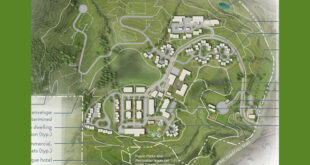“Wassail! Wassail! All over the town, our toast it is white and our ale it is brown; Our bowl it is made of the white maple tree; with the wassailing bowl, we’ll drink to thee.” – The Gloucestershire Wassail, an incantation sung in the Middle Ages
By Dawne Belloise
Tis the season of overindulgence, the one holiday that even reasonable, well-behaved adults will engage in the insanity of excess and do silly things they wouldn’t normally ever do. This is the Super Bowl for the celebrants of the New Year and celebrate we must, as they did in ancient Roman times and the Middle Ages, which were surprisingly even more raucous than you would imagine.
Crested Butte is crowned with some of the best bars, bartenders and libations this side of the Rockies and you’re sure to find some of that same raucous celebration throughout the town to rival the olden times.
The beginning of a new year has been celebrated as far back as time has been recorded and usually coincided with astrological or agrarian events.
Four thousand years ago, the ancient Babylonians celebrated New Year’s with the first new moon following the vernal equinox in late March. They were the first to make New Year resolutions (presumably, the first to break them, too). The annual flooding of the Nile and the rising of the star Sirius heralded in the New Year for ancient Egyptians. The Chinese New Year coincided with the second new moon after the winter solstice.
In ancient Rome, the new year was celebrated with the vernal equinox until Julius Caesar introduced the Julian calendar and declared the first day of the month of Januarius to be the new year, since Janus was the god of doors, gates and beginnings, and he had two faces—one looked back and one looked to the future, simultaneously. The Romans knew how to party: sacrifices to Janus, exchanging gifts, festive greenery decorations, and notoriously licentious parties.
In medieval Europe, the country folk weren’t having the Christian leaders telling them to give up drink and merriment. They dutifully refused and continued their pagan feasting and revelry and on “Newyere Daie” during the Middle Ages of England, they would drink to each other’s health saying, “Waes hael!,” literally meaning, “Be healthy!,” to which the response would be, “Waes drinc!,” which translates as “Drink in good health!”
Wassailing is actually a ritual, a blessing and a singing ceremony to the orchard to scare away evil spirits and awaken the apple trees, ensuring a good fall harvest. A king and queen would be crowned for the event and they’d drink copious amounts of wassail, going from orchard to orchard, where the queen hung pieces of toast soaked in wassail on the branches as a gift to the tree spirits.
Wassail drink of the Middle Ages consisted of mulled brown ale or mead, sugar, ginger, and nutmeg, heated in a bowl and topped with slices of toast. It was consumed at Christmas and Twelfth Night (or Epiphany), and New Year celebrations. Bowls were passed around and shared by all, and for good measure, they’d pour a bit more on the trees.
In Crested Butte, you’ll find more than wassail at the local watering holes, many of which have created their own excellent signature cocktails. These days, perhaps we drink and party to excess on New Year’s Eve as a purge, a way to complete the cycle of the old year and make way for new beginnings. So, yes indeed, raise your glass and your voice, celebrate your resolutions for the New Year (that you will surely break within the first month…), and drink to your responsible capacity and your good health throughout the coming year. Waes hael!
 The Crested Butte News Serving the Gunnison Valley since 1999
The Crested Butte News Serving the Gunnison Valley since 1999


